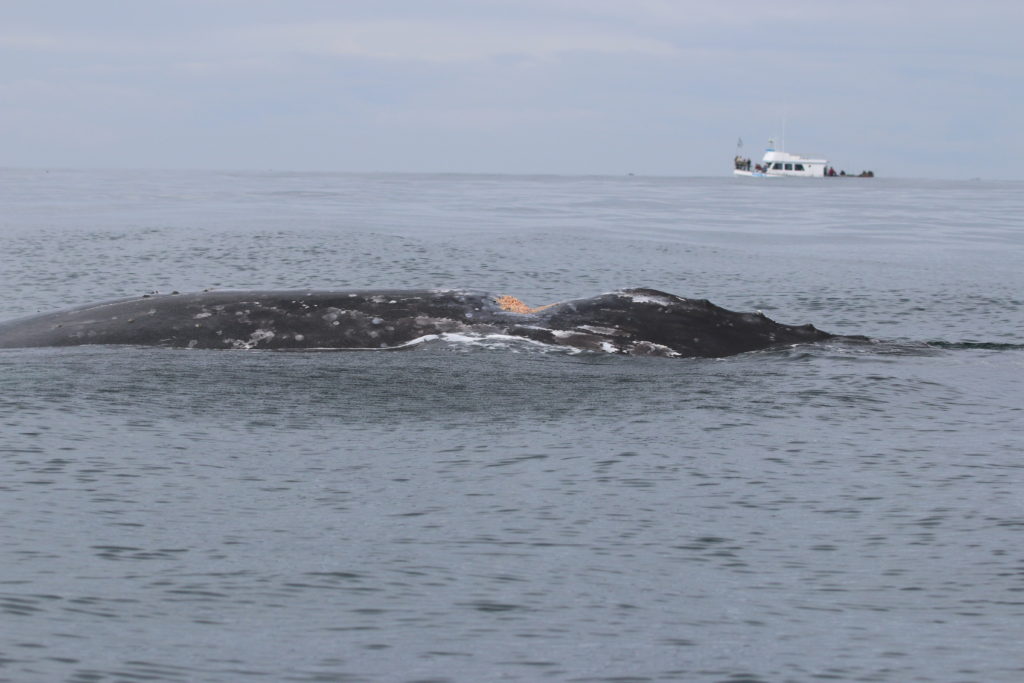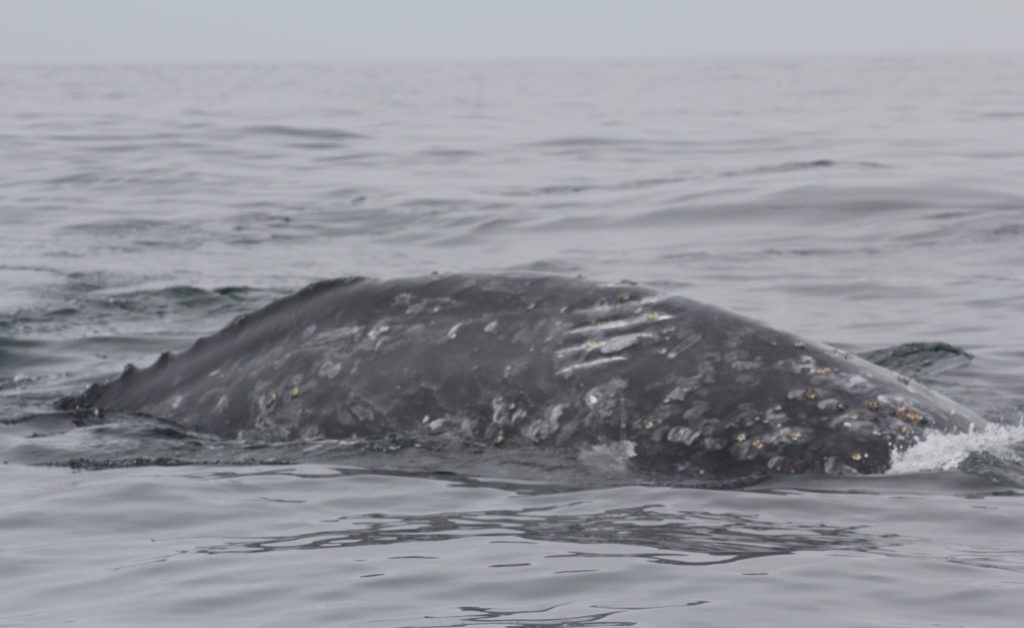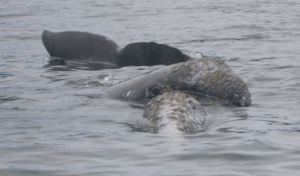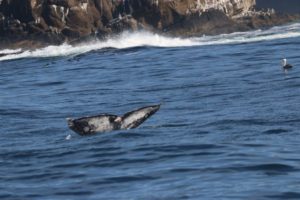
By DANA TIMS/YachatsNews
It’s no secret that watching migrating gray whales during the spring and summer is one of the biggest draws on Oregon’s coast.
Far less known, however, is that if a pod is spotted during that time period, it more than likely belongs to a tiny subset of maybe 250 gray whales collectively known as the Pacific Coast Feeding Group.
Unlike the 20,000-strong Eastern North Pacific group of gray whales, which migrate from Mexico to the Arctic to feed each spring and summer, this smaller group remains in coastal areas of the Pacific Northwest.
Leigh Torres and her group of Oregon State University-based researchers have spent the past seven years trying to find out why.

“There are so many questions we are trying to answer,” said Torres, an associate professor in OSU’s Department of Fisheries and Wildlife. “But between June 1 and Oct. 30, if you see a whale near the Oregon shore, it is almost certainly a Pacific Coast Feeding Group whale.”
Torres and her team, for instance, want to know why this smaller group, which was first identified by other researchers in the 1970s, uses this range, rather than joining its Eastern North Pacific counterparts in making the much longer swim to the Arctic?
The answer likely has something to do with the caloric count of the prey available in the respective areas, Torres said, but work in that area is ongoing and will continue to be tackled in the next few years.
They are also interested in how new members of the group are recruited. Do adult whales from the other population join them at some point? Are their numbers bolstered solely by births to mothers in the existing population?
And, perhaps most importantly, what are the primary stressors to a population that feeds so close to the shore, where propeller strikes from passing boats are all too common and noise levels from the myriad vessels populating those waters threaten to drown out the auditory functions that are so critical to whales finding both mates and food?
“The long-term monitoring of individual whales,” Torres said, “could go a long way toward helping find the answers we are looking for.”

Tools of the trade
Torres’ team, financed primarily through grants, relies on drone technology, acoustic monitors, visual observations, collection of whale poop and other techniques and equipment to help identify and track individual whales.
The drones allow them to collect extensive photographic images of the whales without the noisy intrusiveness of the helicopters that once were used.
Two hydrophones, deployed at off Otter Rock Marine Reserve to the north and the Newport jetty farther south, also show how sound levels in the ocean at Newport during daytime hours are off the charts compared to the Otter Rock device.

And underwater photography, collected from tags placed on the whales’ backs, shows that Pacific Feeding Group grays have developed specialized behaviors that allow them to feed in the shallow waters off the Oregon Coast.
“We have recorded some very cool behaviors,” Torres said.
Some whales, presumably older, stronger whales, literally do headstands that allow them to forage the kelp forests that provide so much of the nearly two tons of food they need daily.
Photos show younger whales trying, unsuccessfully, to emulate this behavior, likely because their pectoral fins aren’t yet strong enough to let them pull it off. Instead, they develop the unique ability to dive and roll on their sides in scooping huge mouthfuls of available crab and shrimp larvae.
Collection of the resulting whale poop – it takes about 24 hours of “gut-passage time” from when a whale feeds and when it defecates – has, so far, produced extraordinarily detailed information about the hormone levels of any given whale, Torres said. Those hormones can tell everything from whether a whale is pregnant to what its particular stress levels are.
“These fecal samples are biological gold,” Torres said during a recent, hour-long presentation. “From a research standpoint, these are very exciting moments.”
Taken together, the research shows that this sub-set of gray whales are shorter and somewhat lighter than their Arctic-swimming counterparts.
“So the question is why?” Torres said. “Is it because of the adaptive morphology to feeding behaviors in a shallow environment? Don’t they need to get as big?
As with so much of her team’s efforts, the search for answers is ongoing.
Meet the cast
The team has a webpage, in fact – www.Individuwhale.com — that includes profiles of some of the individuals they continue to track.
Visitors to the site learn that Moby Dick, for instance, gets her name because she has a whiter pigmentation than most other gray whales, “much like the famous white sperm whale in Moby Dick.”

Buttons, a male first sighted in 2012, is regarded as the chameleon of the group since he has been misidentified on three separate occasions. He is so well known and famous within the Port Orford community that he has been issued an honorary card by the public library there.
Then there’s Scarlett, a female first identified in 1996. She is regarded as the most famous gray whale along the Oregon coast, due to the easily recognizable large scar on the right side of her back.
When it comes to the type of propeller strikes that have injured a number of Oregon’s near-shore grays, Torres and others hope an educational campaign can help prevent similar strikes in the future.
The point of the campaign would be to inform boaters about the intermittent line of reefs that run from Yachats north to Lincoln City. These reefs, located about one nautical mile off shore, attract whales looking to feed.
“The most important thing is to ask boaters not to zoom over those areas,” Torres said. “In terms of overall whale health, there may be nothing more important that we can do than that.”
- Dana Tims is an Oregon freelance writer who contributes regularly to YachatsNews.com. He can be reached at DanaTims24@gmail.com



Great, informative article. Lots of information. I didn’t know about this local gray whale pod.